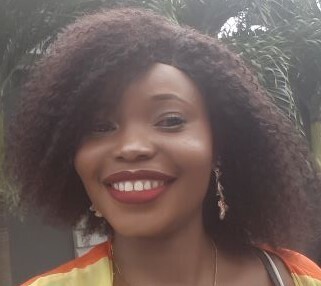Artificial Intelligence (AI) is revolutionising the creative industries, redefining how art is conceived, produced, and experienced across various fields such as visual arts, music, writing, and film.
As AI becomes increasingly integrated, it challenges traditional concepts of creativity and authorship and raises important questions about ethics, intellectual property, and copyright laws.
What is AI?
Artificial Intelligence (AI) enables machines to simulate human intelligence, performing tasks such as learning, reasoning, problem-solving, perceiving, and language comprehension through specifically designed algorithms.
AI technologies fall into two categories; Narrow AI, which handles specialised tasks like facial recognition or internet searches, and General AI, capable of executing any intellectual task a human can do. In the creative sectors, Narrow AI has been especially influential, automating and enhancing various creative processes.
Critical Aspects of AI in the Creative Industry
Content Generation: Different content materials, including images, videos, and designs, can be generated using AI. AI-powered tools can write poetry or even develop an entire narrative for a movie.
Personalisation and Recommendation: AI algorithms analyse user preferences, behaviours, and interactions to provide personalised recommendations. This is when platforms suggest music playlists, books, or movies based on an individual’s preferences.
Enhanced Creativity:AI systems can act as creative partners by making suggestions, generating concepts, or supporting a creative process. This helps creatives like artists, designers, and writers get over creative blocks and expedite their workflow.
Automation and Optimisation: AI optimises the flow of work and simplifies repetitive tasks in the creation process. This allows creators to have time for brainstorming rather than focusing on manual labour.
AI in Visual Arts
Artificial Intelligence (AI) transforms the visual arts by automating complex tasks such as tagging, cropping, and applying effects, particularly through platforms like Adobe's Sensei. This integration is reshaping how artists create and perceive art, redefining art itself.
1. Image Manipulation: AI has significantly impacted visual arts, particularly in image manipulation. Previously, artists relied on software like Photoshop, but now, AI offers advanced alternatives. Machine learning algorithms can now suggest edits or create new visuals, improving everything from colour correction to object manipulation.
2. Style Transfer: In visual arts, AI’s developing subject of style transfer is making waves with its potential for change. The algorithm applies a reference image’s colour and texture to a targeted image while maintaining the original content. Creators can easily experiment with different genres and create fascinating designs.
3. Generative Art: Generative art, enabled by AI, reinvents the creation and appreciation of art. Contradicting the conventional human centric methods, AI independently creates an extensive range of pictures. Creators can venture into new creative domains, collaborate with AI, and redefine creative limits just by harnessing the power of AI.
AI in Music and Audio
Artificial Intelligence (AI) is transforming the music industry by influencing composition, production, and performance. Spotify, for example, employs AI not only to recommend songs but also to enhance music production. By analysing thousands of songs, AI tools help identify and predict trends, enabling producers and artists to create music that aligns with current listening preferences.
1. Music Composition: Music composition has always been a profoundly human endeavour that depends on the artist's creativity and gut feeling. However, AI has widened this scope by giving composers new areas to explore. AI can analyse structures in a large music file that humans can miss to create new songs or even imitate other styles using machine learning techniques.
2. Production: AI is valuable assistance in the production phase of music, enhancing productivity and optimising workflow. The systems can analyse audio recordings and detect and correct flaws like timing or pitch irregularities. Sound quality can be improved using AI-powered mixing and mastering platforms that use advanced algorithms to create professional-grade results.
3. Revolutionizing Audio Engineering: Analysing sound signals by AI to filter vocals, instruments or noise, is reinventing audio engineering. Sound engineers can remix and design sounds with unparalleled accuracy because of this precision. AI is also changing the potential in audio engineering by recreating acoustical settings for sonic effects and multidimensional soundscapes.
AI in Writing and Content Creation
Artificial Intelligence (AI) has revolutionised writing and content creation, making creating, editing, and personalising content easier. For instance, The Washington Post uses its AI technology, 'Heliograf,' to generate short news reports and social media posts. This has significantly boosted article production, especially during major events like the Olympics and elections.
1. Content Generation: AI platforms like GPT3 have proven exceptionally good at generating human-like content in different styles and genres. These AI-powered platforms can create comprehensive and engaging content ranging from blog posts, kids' books, news articles, and more with little or no human assistance.
2. Creative Writing Support: When writers lack inspiration or are struggling with writer’s block, AI can assist. Platforms like Sudowrite and ShortlyAI use advanced language models to give prompts or suggest alternative phrases.
3. Content Optimisation: Optimising content for search engines and social media platforms using AI tools to research keywords, evaluate readability, and predict performance metrics will result in higher ranking and increased engagement.
4. Language Translation and Localisation: Accurately translating texts into several languages to encourage worldwide communication can be achieved with AI tools. Using these tools to translate ensures that a diverse audience around the globe understands the message passed and adapts to regional preferences and cultural peculiarities.
AI in Film and Entertainment
Artificial Intelligence (AI) is transforming the film and entertainment industries, enhancing everything from scriptwriting to post-production. For example, Legendary Entertainment used AI to analyse the script and audience reactions to trailers for the film Warcraft. This analysis helped refine marketing strategies, significantly boosting audience engagement and box office revenue.
1. Filmmaking: Through casting optimization, screenplay analysis, and box office performance prediction, AI can improve filmmaking. This is good for producers because it helps them make wise financial and marketing decisions.
2. Animation: The creation of animations is a tedious operation. AI tools help speed up the creation process by generating characters, scenery, and visual effects. It also forecasts and assesses audience preferences, which helps with creative decision-making.
3. Special Effects: Specific AI tools can create visual effects and realistic worlds and automate time-consuming tasks like colour grading, rotoscoping or composition.
Challenges of AI in the Creative Industry
While AI brings significant opportunities to the creative industries, it also introduces several challenges that need careful consideration and management:
1. Ethical Concerns
Bias and Fairness: AI tools like DALL-E are capable of generating complex artworks almost instantly, potentially overshadowing human artists and raising issues of bias within AI algorithms. There's a need for transparency in how these tools operate to prevent perpetuating biases.
Copyright and Ownership: AI's role in creating content brings up questions about copyright infringement and the ownership of AI-generated works. Strong regulations and ethical guidelines must be established to address these issues.
Socio-economic Impacts: AI's ability to automate creative tasks can lead to job displacement and economic instability within traditional creative roles. It Is vital to use AI to augment human capabilities rather than replace them, emphasising upskilling and fostering new roles that leverage both human and AI strengths.
2. Originality and Creativity
Concerns persist about AI's ability to match the emotional depth of human-made creations. Encouraging collaborations between artists and AI experts can help create works that resonate more deeply on an emotional level, blending AI's computational power with human creativity.
3. Quality Control
Ensuring consistent quality in AI-generated content remains a challenge due to its variability in complexity and emotional depth. Establishing robust quality control protocols and investing in continuous research and development can help improve the reliability and richness of AI-generated content.
The Future of AI in Creative Industries
The progression of AI is set to introduce more sophisticated tools. Companies like Nvidia are developing AI that can create interactive graphics for video games in real time, which could soon allow game developers to produce more immersive environments faster and with fewer resources.
1. Pervasive Collaboration Between AI and Creatives
AI is set to become a standard collaborator in the creative process, seamlessly integrating with human creativity. This evolution will give rise to new art forms and expressions previously unimaginable, as AI's computational power blends with human artistic flair.
In music, AI will adapt to individual preferences and styles, potentially revolutionising live performances with real-time duets between AI and human musicians, each responding dynamically to the other.
2. Enhanced Customization and Personalization
As AI systems better understand individual preferences and cultural contexts, they will increasingly personalise content across media. Films and books could dynamically adapt to audience reactions in real time, while in gaming, AI will customise challenges and storylines to match each player's unique style.
3. Democratisation of Creative Tools
AI is transforming creative industries by making advanced tools more accessible, allowing independent filmmakers to produce high-quality effects and edit films at lower costs. Similarly, emerging writers can leverage AI to refine their manuscripts, develop plots, and connect with agents or publishers, effectively lowering barriers to entry across various creative fields.
4. Advanced Real-Time Content Creation
In the future, AI could significantly enhance live events and performances by creating content in real-time. It could edit live footage on the fly, delivering perfectly cut broadcasts without needing human intervention, and provide real-time translation and subtitling for performances and speeches, making them instantly accessible to audiences worldwide.
5. AI in Education and Skill Development
AI is set to transform not only content creation but also the teaching and learning of creative skills. It will offer personalised educational experiences for arts and design students, adjusting teaching methods to each individual's pace and style, while also enhancing human skills by providing real-time feedback and suggestions to refine techniques.
Emerging AI Technologies in the Creative Industry
AI-Powered Virtual Assistants for Creatives: Virtual assistants, like chatbots or voice-activated tools, can enhance efficiency for creatives by handling communication, project management, and admin tasks. They're capable of scheduling meetings, sending reminders, organising files, and offering creative suggestions tailored to user preferences and previous work.
Content Creation Platforms: Advanced algorithms, such as NLP and GPT models, are driving the creation of platforms that can automatically produce high-quality text, like articles or marketing copy. These tools assist creatives in generating ideas, overcoming writer's block, and enhancing content production efficiency.
Virtual Reality (VR) and Augmented Reality (AR): Enhanced VR and AR experiences are now possible with technology that creates realistic simulations and personalised, interactive environments, adapting in real-time to user behaviour.
Personalisation and Recommendation Systems: Sophisticated machine learning algorithms are now enhancing recommendation systems, analysing user data to offer personalised suggestions for content, products, and experiences. This technology aids creatives in effectively targeting their audience, boosting engagement and satisfaction.
AI-Driven Data Visualization and Storytelling: Interactive data visualisations and storytelling narratives are generated by using algorithms to analyse large datasets. These tools enable creatives to discover insights, effectively communicate complex ideas, and captivate audiences with immersive experiences.
Collaboration Platforms: In the creative industry, collaboration is being transformed with AI tools that enable real-time feedback, streamline workflows, and facilitate remote teamwork, thereby boosting productivity and creativity.
Conclusion
AI is transforming the creative industries by enabling new forms of artistic expression and enhancing the efficiency of creative processes. However, as the sectors continue to embrace AI, balancing its benefits with potential challenges is crucial to ensuring it augments rather than replaces human creativity.
To fully realise this potential, it is vital to implement educational initiatives that equip creatives with the knowledge and skills to effectively use AI. By fostering an inclusive approach, the creative industries can harness AI not only to enhance artistic practices but also to empower a new generation of artists and innovators.
Frequently Asked Questions
How is AI enhancing creative possibilities for artists and designers?
AI is fundamentally transforming the creative process by introducing new technologies that expand creative possibilities. For visual artists and designers, tools like generative AI allow for the creation of AI-generated images and designs that were not possible before. This technology continues to evolve, giving artists new ways to express their creative vision and produce inspired work.
What role does AI play in the music and advertising industries?
In the music industry, AI-driven tools are being used to create music compositions and enhance production on streaming platforms, tailoring content to specific audiences and improving the overall listening experience. Similarly, in advertising, AI's impact is significant, providing the ability to analyze vast amounts of consumer data to generate personalized content that resonates more effectively with targeted audiences.
What are the ethical concerns associated with incorporating AI in creative work?
The integration of AI in creative work raises important ethical concerns related to the originality of AI-generated content and the potential displacement of creative professionals. As technology continues to be an important tool in the art world, it is crucial to address these concerns by ensuring that AI complements human creativity, respects artists' intellectual properties, and supports rather than replaces the human artist.

Yetunde Salami is a seasoned technical writer with expertise in the hosting industry. With 8 years of experience in the field, she has a deep understanding of complex technical concepts and the ability to communicate them clearly and concisely to a wide range of audiences. At Verpex Hosting, she is responsible for writing blog posts, knowledgebase articles, and other resources that help customers understand and use the company's products and services. When she is not writing, Yetunde is an avid reader of romance novels and enjoys fine dining.
View all posts by Yetunde Salami




















